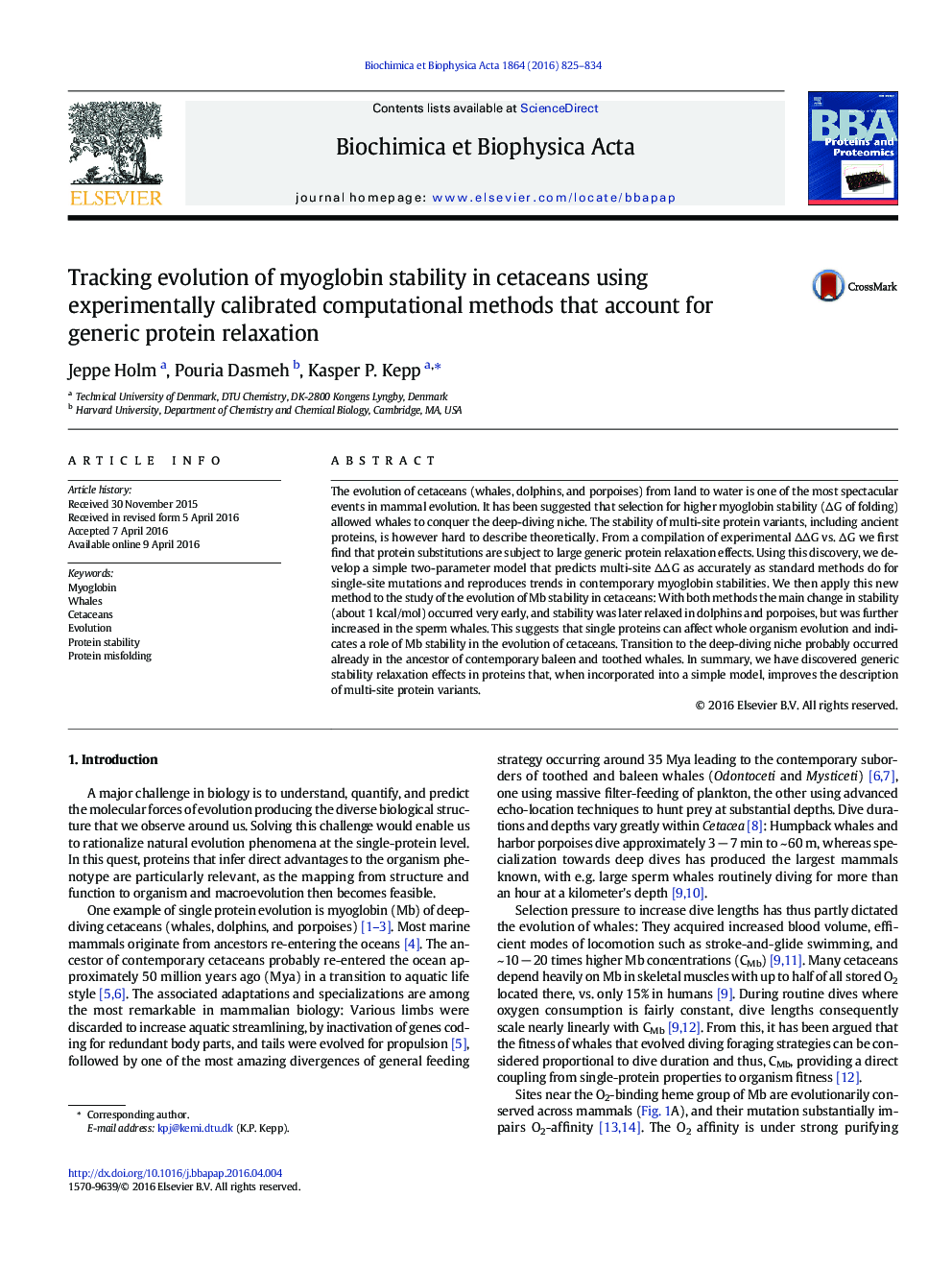| Article ID | Journal | Published Year | Pages | File Type |
|---|---|---|---|---|
| 1177694 | Biochimica et Biophysica Acta (BBA) - Proteins and Proteomics | 2016 | 10 Pages |
•High myoglobin stability is hypothesized to enable whales to perform deep dives.•We develop two models that describe stability changes from multi-site mutation.•The evolutionary history of myoglobin stability in cetaceans was studied.•We computed stability changes in ancestor and contemporary myoglobins.•Stability increased early on but was later relaxed in some clades, e.g. dolphins.
The evolution of cetaceans (whales, dolphins, and porpoises) from land to water is one of the most spectacular events in mammal evolution. It has been suggested that selection for higher myoglobin stability (∆ G of folding) allowed whales to conquer the deep-diving niche. The stability of multi-site protein variants, including ancient proteins, is however hard to describe theoretically. From a compilation of experimental ∆∆G vs. ∆G we first find that protein substitutions are subject to large generic protein relaxation effects. Using this discovery, we develop a simple two-parameter model that predicts multi-site ∆∆ G as accurately as standard methods do for single-site mutations and reproduces trends in contemporary myoglobin stabilities. We then apply this new method to the study of the evolution of Mb stability in cetaceans: With both methods the main change in stability (about 1 kcal/mol) occurred very early, and stability was later relaxed in dolphins and porpoises, but was further increased in the sperm whales. This suggests that single proteins can affect whole organism evolution and indicates a role of Mb stability in the evolution of cetaceans. Transition to the deep-diving niche probably occurred already in the ancestor of contemporary baleen and toothed whales. In summary, we have discovered generic stability relaxation effects in proteins that, when incorporated into a simple model, improves the description of multi-site protein variants.
